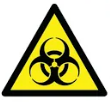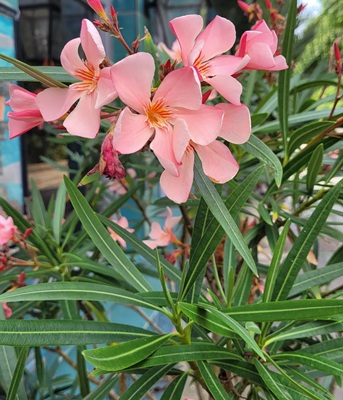Flower Properties
| Property | Value |
|---|---|
| English Name | Oleander |
| MainColor | Pink |
| PlantType | |
| Growth Type | |
| Season | August |
| ImageUrl | Nerium-002 |
| Photographer | DP |
| Location | London |
| Human Toxicity |
Flower Details
Description
A dense, evergreen shrub with lance-shaped leaves and clusters of pink, white, or red flowers. Common in Mediterranean-style gardens and warm climates.
Distribution
Native to the Mediterranean region, often grown ornamentally in the UK (mainly in pots or conservatories).
Medicinal/Other Uses
Historically used in small doses for heart conditions, but now obsolete due to extreme toxicity.
Edibility
Highly poisonous — no part of the plant should ever be eaten.
Human Toxicity

All parts contain powerful cardiac glycosides similar to digitalis. Even small amounts can cause severe poisoning in humans and animals; smoke from burning oleander is also toxic.
Pet Toxicity

Extremely toxic — ingestion can cause vomiting, irregular heartbeat, collapse, and death.
Active Compounds
Oleandrin, neriine, digitoxigenin (cardiac glycosides).
